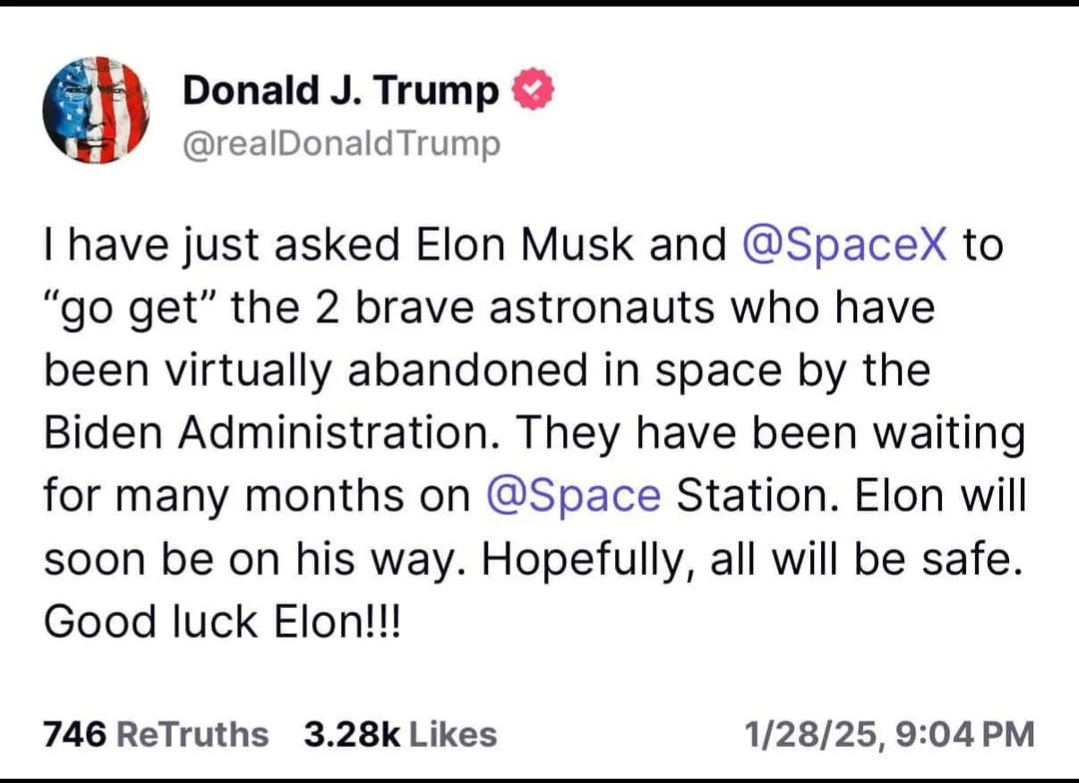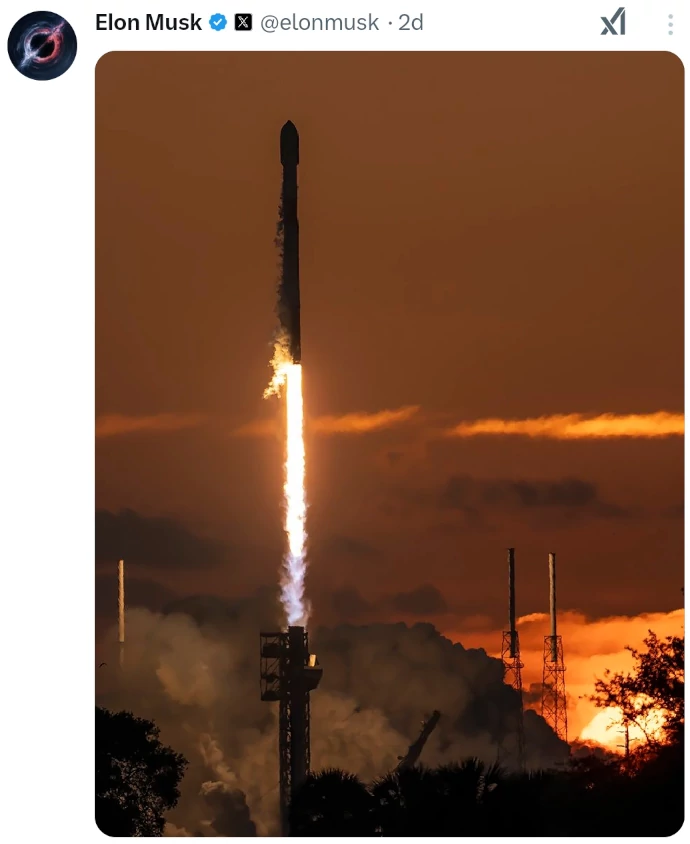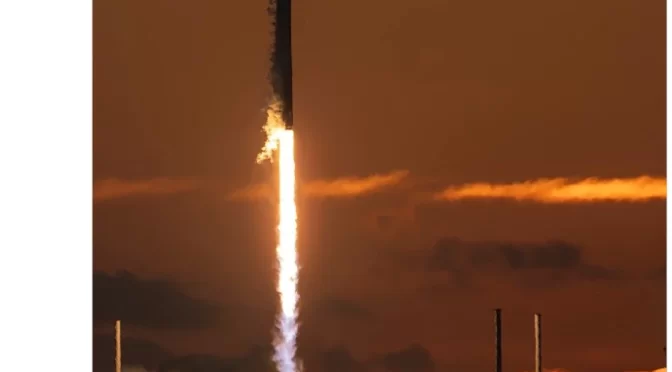- Rescue of astronauts Butch Wilmore and Suni Williams
- 1-28-25-904 PM-saw an update of Trump asking Musk to help
- 3-14-25 Crew Launched to ISS
- 3-17-25-Astronauts were loaded and began journey home

“The SpaceX Dragon spacecraft has separated from the Falcon 9’s second stage and is flying on its own. The spacecraft is traveling at approximately 17,500 miles per hour (28,200 kilometers per hour),” NASA posted in its live blog about the launch at 7:17 p.m. ET.

The Rescue Unfolds
On January 28, 2025, at 9:04 PM, I saw an update: President Trump asked Elon Musk to step in and help. Fast forward to March 17, 2025, and the astronauts were loaded up and began their journey back to Earth. But the real action started earlier—on March 14, 2025, SpaceX launched a crew to the International Space Station (ISS) to rescue astronauts Butch Wilmore and Suni Williams, who’d been stranded.
The mission? SpaceX Crew-10, executed with the reusable Crew Dragon spacecraft named Endeavour. This veteran capsule, a cornerstone of SpaceX’s human spaceflight program, rocketed toward orbit from NASA’s Kennedy Space Center. The newest crew includes:
- Anne McClain and Nichole Ayers, NASA military pilots.
- Takuya Onishi from Japan and Kirill Peskov from Russia, both former airline pilots.
The Journey: Speed, Heat, and Precision
Here’s how it’s going down, straight from NASA’s live blog:
- At 7:17 PM ET, NASA posted, “The SpaceX Dragon spacecraft has separated from the Falcon 9’s second stage and is flying on its own. The spacecraft is traveling at approximately 17,500 miles per hour (28,200 kilometers per hour).” Launched atop the Falcon 9 rocket—SpaceX’s reusable workhorse known for cutting costs and boosting launch frequency—the Crew Dragon is fully autonomous. Still, astronauts onboard can manually take control if needed.
As of March 18, 2025, the capsule’s nearing its final stretch. Around 5:00 PM ET today, the Crew Dragon is expected to fire its engines for reentry—the most dangerous phase of any trip home from space. Hitting the atmosphere at over 22 times the speed of sound, the craft’s exterior will heat to more than 3,500 degrees Fahrenheit (1,926 degrees Celsius), often triggering a communication blackout.
Then comes the landing: after plunging toward Earth, the Crew Dragon will deploy two sets of parachutes in quick succession. If all goes to plan, it’ll slow from orbital speeds of over 17,000 miles per hour (27,359 kilometers per hour) to less than 20 miles per hour (32 kilometers per hour) as it splashes into the ocean.
Why Musk Had to Step In
The question burns: how did the prior presidency let this happen? Butch Wilmore and Suni Williams were stuck on the ISS, and help wasn’t coming—until Trump tapped Musk. On January 28, 2025, that call went out, and SpaceX delivered. The Crew-10 mission isn’t just a rescue—it’s a statement. While the Endeavour capsule and Falcon 9 prove their reliability, the media’s barely whispering about the prior administration’s inaction. Why not?
The Bigger Picture
This isn’t just about getting astronauts home—it’s about capability and leadership. SpaceX’s reusable tech, from the Falcon 9 to the Crew Dragon, is rewriting spaceflight, making it faster and cheaper. Meanwhile, Musk’s answering a call the prior presidency dodged. As of right now, March 18, 2025, those astronauts are hurtling back to Earth—thanks to Trump’s push and Musk’s execution. So why isn’t this dominating the headlines?
Final Word
The SpaceX rescue is happening RIGHT NOW—a crew launched on March 14, astronauts loaded by March 17, and a fiery reentry set for today. This should be everywhere: media, wake up! The prior presidency refused to help, but Trump and Musk didn’t. Butch Wilmore, Suni Williams, and the Crew-10 team are proof of what’s possible when action trumps inaction. Stay tuned—the splashdown’s coming.
Sources
- NASA Live Blog Quote: Direct from NASA’s coverage of the Crew-10 launch, as cited in the original text: “The SpaceX Dragon spacecraft has separated from the Falcon 9’s second stage and is flying on its own. The spacecraft is traveling at approximately 17,500 miles per hour (28,200 kilometers per hour).” Likely sourced from www.nasa.gov.
- Crew-10 Mission Details: Information on the Crew Dragon Endeavour, Falcon 9, and crew (Anne McClain, Nichole Ayers, Takuya Onishi, Kirill Peskov) aligns with public SpaceX and NASA mission updates. No external links provided in original; based on author’s input and general knowledge.
- President Donald Trump
- Elon Musk
- TruthSocial.com
- x.com
Author, Ryan Bridglal, 03-18-2025
#featured #bridgenewzcom #bridgenewz #breakingnews #breaking #news #businessnews #trump #donaldtrump #musk #elonmusk #x #truthsocial #political #space #rescue #ISS #nasa #spacex #dragon #falcon9
